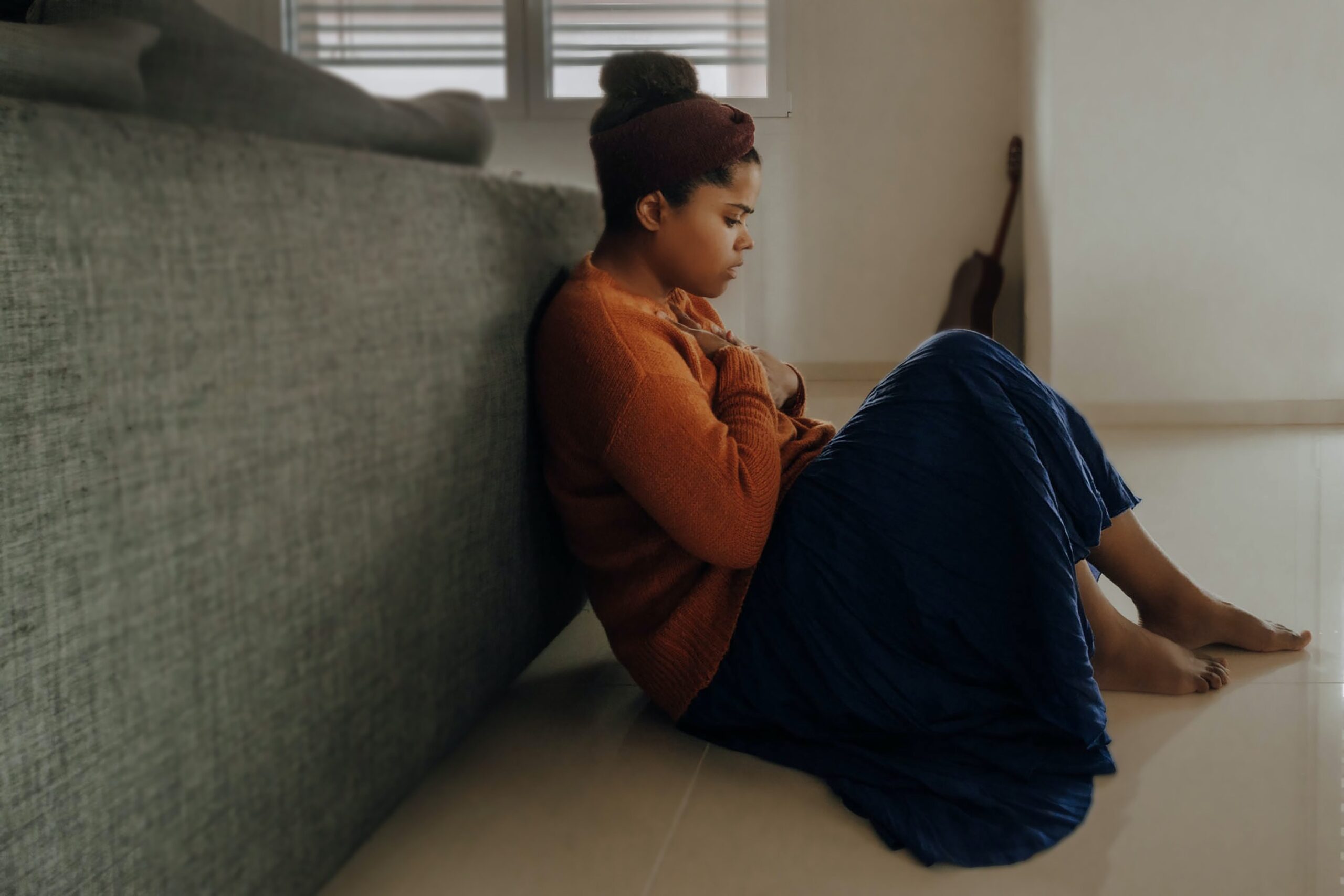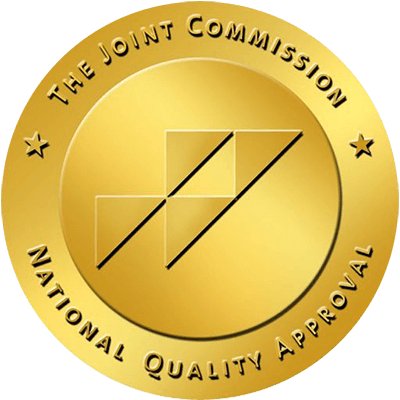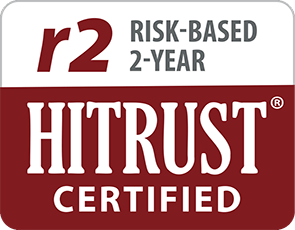Written by Shannon,
Brightside Health
22 Minute Read

Medically reviewed by:
Conor O’Neill, PHD
Assoc. Director of Therapy
10 Minute Read

Social anxiety is a condition marked by intense fear and anxiety in social or performance situations, impacting many individuals across the globe.
Everyday interactions can trigger feelings of embarrassment and self-consciousness, hindering one’s ability to engage fully in life.
It manifests in various ways, from the fear of being judged to the overwhelming worry of negative evaluation or rejection in social settings.
This article will focus on exploring the symptoms, possible causes, and effective treatments for managing social anxiety.
What Is Social Anxiety Disorder?
Social anxiety disorder (SAD), also referred to as social phobia, is a mental health condition characterized by intense nervousness in social settings. This disorder manifests as deep fear and anxiety during interactions with others. The fear that sufferers feel is disproportionate to the situation.
Individuals with this disorder often feel self-conscious, worrying about being negatively judged or embarrassed. These feelings can occur in everyday social situations.
Such anxiety can impact various aspects of life, including work, school, and personal relationships.
Common scenarios that trigger social anxiety include public speaking, meeting new people, or eating in front of others. The concern about being observed or criticized can be overwhelming, leading to avoidance of these activities.
The meaning of social anxiety extends beyond mere shyness. While shyness is a common personality trait, social anxiety disorder symptoms are more severe and can interfere with daily life. People suffering from SAD will often avoid social situations or interactions due to their anxiety, which in turn reinforces the condition.
The American Psychiatric Association has listed the criteria for social anxiety in the Diagnostic and Statistical Manual of Mental Disorders (DSM-5-TR). The social anxiety disorder DSM-5-TR criteria include:
- Intense fear of social situations
- Avoidance of interactions
- Physical symptoms like sweating or trembling
- Experiencing intense anxiety disproportionate to the situation
Social anxiety disorder often starts in the teenage years but can develop at any age.
Early intervention and adequate treatment, such as therapy or medication, can help manage social anxiety disorder symptoms effectively.
Understanding the definition and implications of the condition is crucial for those wanting to know how to get rid of social anxiety and for helping those affected to seek appropriate care and support.
6 Most Common Social Anxiety Symptoms
If you’re wondering, “What’s social anxiety?”, there are six common characteristics or signs that make up a social anxiety definition.
1. Intense Fear of Social Situations
A key feature of social anxiety disorder is an overwhelming fear of social settings. Individuals with this condition worry excessively about being watched, scrutinized, or judged by others, even in seemingly ordinary interactions.
This fear can arise in various situations, such as speaking in front of a group, eating in public, or engaging in small talk. The anxiety is often disproportionate to the actual circumstance, making everyday social encounters feel highly distressing.
2. Avoidance Behavior
To cope with their anxiety, many individuals actively avoid social situations that trigger their fears. This can include skipping social gatherings, avoiding eye contact, or refusing to participate in conversations.
Social anxiety causes even necessary activities to become overwhelming, such as attending school, going to work, or running errands.
Over time, avoidance can lead to isolation and limit personal and professional growth, reinforcing the cycle of anxiety.
3. Anticipatory Anxiety
Many individuals with social anxiety experience intense worry long before a social event occurs. They may spend hours or even days dreading an upcoming situation, replaying possible scenarios in their minds.
This excessive worry often leads to trouble concentrating, restlessness, and heightened stress levels.
Even after the social interaction has ended, individuals may continue analyzing what they said or did, fearing they embarrassed themselves.
This cycle of pre- and post-event anxiety can disrupt daily life and increase overall stress.
4. Physical Symptoms
Social anxiety often manifests through physical symptoms, which can make social interactions even more distressing. Common physical signs of social anxiety include excessive sweating, blushing, trembling, and an increased heart rate.
Some individuals may experience dizziness, nausea, shortness of breath, or muscle tension.
These symptoms of social anxiety can be so intense that they interfere with communication and make social situations feel physically overwhelming.
5. Negative Self-Perception
A persistent fear of embarrassment or humiliation is common in social anxiety disorder.
Individuals may believe they are awkward, unlikable, or incapable of handling social situations, even when there is no evidence to support these thoughts.
They often engage in harsh self-criticism and assume that others view them negatively.
These irrational beliefs can lead to feelings of worthlessness and further discourage participation in social interactions.
6. Challenges in Daily Functioning
Social anxiety can significantly impact personal, academic, and professional life.
At school, students may struggle with class participation, presentations, or forming friendships. In the workplace, individuals may avoid meetings, networking opportunities, or job interviews, limiting career advancement.
Even routine activities, such as making phone calls or ordering food at a restaurant, can feel overwhelming. As a result, social anxiety can interfere with achieving personal goals and maintaining relationships.
Want to speak 1:1 with an expert about your anxiety & depression?
What Causes Social Anxiety? 5 Most Frequent Causes of Social Anxiety
Although the exact cause of social anxiety is unclear, there are several contributing factors that can lead to this type of anxiety disorder.
1. Genetics
Genetics can play a significant role in developing social anxiety. Individuals with family members who have social anxiety disorder are more likely to experience it themselves.
This suggests that a genetic predisposition may contribute to how the brain processes fear and stress in social situations.
2. Overactive Amygdala
An overactive amygdala is another contributing factor. This part of the brain is responsible for processing fear and emotional responses.
When the amygdala is overly active, it can heighten feelings of anxiety, making social interactions feel more intimidating and stressful.
3. Past Trauma and Negative Experiences
A history of abuse, bullying, or teasing can lead to the development of social anxiety. Experiences that create feelings of low self-worth or fear can significantly impact how individuals interact socially.
Negative social experiences can reinforce avoidance behaviors, making it more challenging to engage in future social situations.
4. Environmental Factors
Upbringing and social experiences play a crucial role in the development of social anxiety. A lack of social interaction during formative years can make it harder to develop confidence in social settings.
Avoidance can also be a cause; avoiding an uncomfortable social situation can lead to future anticipatory anxiety, avoidance, and eventual social anxiety.
Additionally, repeated negative social experiences, such as rejection or humiliation, can increase the risk of developing anxiety around social interactions.
5. Cultural and Societal Expectations
Cultural norms and societal pressures can also contribute to social anxiety. Societies that place a strong emphasis on social performance, public image, or criticism can create pressure that exacerbates or triggers social anxiety.
Expectations to always perform well in social or professional settings can lead to fear of judgment and avoidance of certain situations.
How to Treat Social Anxiety? Social Anxiety Disorder Treatments
If you’re wondering how to get rid of the symptoms and causes of social anxiety, there are several social anxiety disorder therapies and treatments that can help.
Here are some ways you can learn how to deal with anxiety.
Psychotherapy
The number one psychotherapy treatment for social anxiety is exposure therapy, a form of cognitive behavioral therapy (CBT). CBT focuses on identifying and challenging negative thought patterns that contribute to anxiety in social situations.
Exposure therapy involves the gradual confronting of the feared social situations that trigger the anxiety. Through structured sessions, individuals learn how to replace irrational fears with more constructive and realistic thoughts, aiming to break the cycle of avoidance and negative thoughts.
With consistent practice, this method can significantly reduce symptoms of social anxiety and improve overall confidence in social settings.
Medications
Several types of medications are commonly prescribed to help manage social anxiety disorder.
Selective serotonin reuptake inhibitors (SSRIs), such as fluoxetine (Prozac) and sertraline (Zoloft), are frequently used as first-line social anxiety treatments. These medications work by increasing serotonin levels in the brain, which can help regulate mood and reduce anxiety.
For individuals who need short-term relief, benzodiazepines like alprazolam (Xanax) or clonazepam (Klonopin) may be considered. However, benzodiazepines carry a risk of dependency and are typically prescribed with caution for limited use.
Beta-blockers, such as propranolol, can also be helpful in reducing physical symptoms of social anxiety, such as a racing heart or trembling, in specific situations like public speaking.
Medication effectiveness varies from person to person, and it’s important to work closely with a healthcare provider to find the right social anxiety treatment plan.
Support Groups
Joining a support group can provide a sense of community and encouragement for individuals struggling with social anxiety.
These groups offer a safe, non-judgmental space where participants can share their experiences, learn coping strategies, and gain reassurance from others facing similar challenges.
Practicing social interactions in a supportive environment can help individuals build confidence and reduce feelings of isolation. Many support groups are available in-person or online, making them accessible to a wider audience.
For some, peer support can be an essential complement to professional therapy or medication.
Self-Help Strategies
Incorporating self-help techniques into daily life can greatly enhance the effectiveness of formal social anxiety treatments.
Mindfulness practices, such as meditation and deep breathing exercises, help individuals stay present and manage anxious thoughts.
Relaxation techniques like progressive muscle relaxation can also reduce physical symptoms of social anxiety, making social situations feel less overwhelming.
Gradual exposure to feared social situations—starting with smaller, manageable steps—can lead to significant long-term improvement.
Keeping a journal to track anxiety triggers and progress can help individuals recognize patterns and develop personalized coping strategies. Developing healthy habits, such as regular exercise, balanced nutrition, and proper sleep, can further support emotional well-being.
Combination Treatments
A combination of therapy, medication, and self-help techniques often leads to the best results in managing social anxiety disorder. Addressing the condition from multiple angles allows for a more comprehensive and personalized treatment approach.
For example, medication can help alleviate severe social anxiety disorder symptoms, making it easier for individuals to engage in therapy and apply learned coping skills. Support groups and self-help strategies can further reinforce progress by providing additional resources and encouragement.
Since every individual’s experience with social anxiety is unique, tailoring a treatment plan to fit personal needs is crucial for effective long-term management. You may also find these tips on how to deal with anxiety helpful.
Want to speak 1:1 with an expert about your anxiety & depression?
Types of Social Anxiety
Social anxiety can manifest in various forms, each with distinct characteristics.
Generalized Social Anxiety Disorder
Individuals with generalized social anxiety disorder experience intense fear or anxiety in most social situations. They may feel embarrassed, judged, or rejected, which affects their ability to interact in numerous settings.
Non-Generalized (Specific) Social Anxiety
This type of social anxiety is tied to specific social situations or activities. It might involve a fear of public speaking or performance situations, which can severely impact daily activities or work-related tasks.
Interaction Anxiety
Interaction anxiety revolves around personal interactions or small group activities. Those affected may avoid social gatherings or have difficulty building close relationships due to their fear of engaging with others.
Performance Anxiety
Performance anxiety is characterized by fear related to performing tasks in front of others, such as speaking, eating, or writing. This can lead to avoidance of situations where one feels under scrutiny, ultimately impacting personal and professional opportunities.
Severity of Social Anxiety
Social anxiety can manifest with different degrees of intensity, impacting an individual’s day-to-day life. It’s usually assessed through clinical, diagnostic evaluation or interview by a licensed clinician using standardized scales like the Liebowitz Social Anxiety Scale (LSAS) or the Severity Measure for Social Anxiety Disorder.
These tools help in determining the level of anxiety a person may experience in social situations.
Understanding the severity of social anxiety involves identifying the symptoms and their impact. Some common signs of social anxiety include palpitations, sweating, and blushing. At the extreme end, it can severely affect daily activities and relationships.
Examples of Social Anxiety:
- Mild Social Anxiety: Occasional discomfort in social settings, but still able to participate in usual activities.
- Moderate Social Anxiety: Regular occurrence of anxiety symptoms, which may lead to avoidance of certain situations.
- Severe Social Anxiety: Significant disruption to normal life, with constant avoidance and distress in most or all social interactions.
A score range, depending on the assessment tool or scale, indicates the severity of the condition, where higher scores suggest more severe social phobia.
Evaluating the severity is crucial for effective social anxiety treatment planning, allowing healthcare professionals to tailor interventions based on individual needs.
7 Tips for Managing Social Disorders and Phobias
Alongside professional treatment and therapy, individuals suffering from social disorders and phobias can practice self-help techniques to help manage their symptoms and their causes.
1. Avoid Avoidance
While avoiding social situations may provide short-term relief, it reinforces anxiety in the long run. Gradual exposure to feared scenarios—starting with less intimidating situations and slowly progressing to more challenging ones—can help desensitize the fear response.
By repeatedly facing social settings, individuals can build confidence, proving to themselves that feared outcomes are unlikely or manageable.
Small steps, like initiating brief conversations or attending low-pressure gatherings, can lead to significant progress.
2. Challenge Negative Thoughts
Individuals with social anxiety often experience irrational fears about being judged, embarrassed, or rejected. Challenging these thoughts involves identifying and questioning their validity—asking, “Is this fear realistic?” or “What evidence supports or contradicts this belief?”
By reframing negative thoughts and replacing them with more balanced perspectives, people can reduce the emotional impact of anxiety.
Over time, practicing this cognitive restructuring helps build confidence and a more positive self-view.
3. Practice Mindfulness and Breathing
Mindfulness techniques, such as meditation or grounding exercises, help individuals stay present and avoid becoming overwhelmed by anxious thoughts. By focusing on the present moment, people can prevent excessive worrying about past or future social interactions.
Controlled breathing techniques, like the 4-7-8 method (inhaling for four seconds, holding for seven, and exhaling for eight), can slow the heart rate and create a calming effect.
These practices make it easier to remain composed during social situations.
Want to speak 1:1 with an expert about your anxiety & depression?
4. Regular Physical Activity
Exercise plays a crucial role in managing anxiety by releasing endorphins—natural chemicals that improve mood and reduce stress. Engaging in physical activities like running, swimming, or yoga can help regulate emotions and decrease overall anxiety levels.
Regular workouts also improve sleep quality and boost self-esteem, which can further support confidence in social situations.
Even short daily walks can have a noticeable positive impact on mental well-being.
5. Positive Affirmations
Using positive affirmations can help reframe negative self-perceptions and boost self-confidence. Repeating encouraging phrases such as “I am capable in social situations” or “I am worthy of connection” can gradually shift one’s mindset.
Over time, this practice rewires the brain to focus more on strengths rather than perceived shortcomings.
Writing affirmations in a journal or saying them in front of a mirror can reinforce their effectiveness.
6. Acceptance and Commitment Therapy (ACT)
ACT provides an alternative approach to managing social anxiety by encouraging individuals to accept their thoughts and emotions rather than resisting or fearing them.
Instead of trying to eliminate anxiety, ACT teaches people to acknowledge it while still taking meaningful action.
By committing to personal values and engaging in fulfilling activities despite anxious thoughts, the individual can lead a richer life.
Techniques such as mindfulness, cognitive defusion (separating from anxious thoughts), and acceptance strategies are key elements of this therapy.
7. Self-Care Practices
Consistent self-care is essential for maintaining emotional well-being and managing anxiety. Prioritizing adequate sleep, a balanced diet, and relaxation techniques can help regulate stress levels.
Creating a structured routine that includes activities promoting joy and relaxation—such as reading, hobbies, or spending time with loved ones—can improve resilience against social anxiety.
Ensuring personal well-being strengthens the foundation for facing social challenges with greater ease.
How to Know If You Have Social Anxiety?
Social anxiety can manifest in various ways, and recognizing it involves observing common symptoms. Individuals may frequently worry about being judged or fear embarrassing themselves in social settings.
Physical symptoms are also prevalent. People with social anxiety might experience blushing, sweating, or trembling when involved in social interactions. They might also have a racing heart or feel nauseated when anticipating social encounters.
Emotionally, they may feel extremely nervous, often leading to situational distress. This anxiety often results in behaviors such as avoiding eye contact, misusing alcohol or substances, or avoiding social gatherings entirely. Others might label them as shy or withdrawn.
Understanding behavior patterns and the signs of social anxiety can also provide insight. Those with social anxiety might find their minds going blank during conversations. They may constantly replay social interactions in their minds, worrying they have said something wrong.
Another common sign that someone might be suffering from social anxiety is the misuse of alcohol or substances in order to manage and engage in social interactions.
It’s important to remember that social anxiety symptoms can vary. Evaluating the frequency and intensity of these experiences can help determine the presence of social anxiety.
Additionally, it can be useful to take a social anxiety disorder test that screens your symptoms, providing insights and helping determine if you need to seek professional help.
Do You Need Professional Social Anxiety Help?
Struggling with anxiety can feel overwhelming, but you don’t have to face it alone.
Brightside Health offers expert, evidence-based treatment designed to help you regain control and find relief. With personalized therapy and medication plans, you can start feeling better from the comfort of your home.
Take the first step toward a brighter future—get started with Brightside Health today and take our free online anxiety test.
Want to speak 1:1 with an expert about your anxiety & depression?
Key Takeaways
Social anxiety is a chronic mental health condition marked by an intense fear of being judged in social situations, leading to avoidance and distress.
Symptoms of social anxiety include extreme self-consciousness, physical reactions like sweating or trembling, and significant interference in daily life.
It’s more than just shyness; it can severely impact work, school, and personal relationships.
Fortunately, effective social anxiety treatments like exposure therapy and medication can help individuals manage their anxiety and improve their quality of life.
FAQs
What does social anxiety mean?
Social anxiety refers to a mental health condition characterized by intense nervousness in social settings. It manifests in various ways, from the fear of being judged to the overwhelming worry of negative evaluation or rejection in social settings.
Who does social anxiety affect?
Social anxiety disorder (SAD) can affect anyone, regardless of age, gender, or background. It often starts in childhood or adolescence but can also emerge in adulthood.
Certain factors, such as genetic predisposition, personality traits, or past negative social experiences, may increase the likelihood of developing the disorder.
Although it’s prevalent across various demographics, women and younger individuals tend to report higher rates of social anxiety.
What does social anxiety feel like?
Social anxiety manifests through intense fear and apprehension during social situations. Individuals often feel self-conscious, fearing judgment or embarrassment.
Physical symptoms such as sweating, trembling, or an increased heart rate are common. Mentally, it can cause avoidance behavior, where individuals deliberately stay away from social gatherings.
This anxiety can be debilitating and sometimes leads to a cycle of social withdrawal.
How common is social anxiety disorder?
Social anxiety disorder is one of the most common mental health conditions. Studies suggest that about 7% of the population is affected at any given time.
While many suffer in silence, the disorder is prevalent in both men and women, often undiagnosed. Awareness and understanding of its commonality can break stigmas, encouraging those affected to seek help and support.
What are the potential effects of social phobias?
Social phobias can have a profound impact on an individual’s life. They can lead to missed opportunities in personal relationships and careers.
The persistent fear and avoidance can cause isolation, leading to depression or substance abuse. Over time, these social limitations can lower self-esteem and create a cycle of anxiety that is challenging to break without intervention.
What is the difference between having social anxiety disorder and being shy?
Shyness is a personality trait where individuals may feel uncomfortable or hesitant in social situations.
Social anxiety disorder, however, is an intense and persistent fear of being judged or embarrassed in social or performance situations. Unlike shyness, it interferes with daily functioning and causes significant distress, going beyond simple discomfort and into the realm of mental health issues.
What is the difference between social anxiety disorder and agoraphobia?
While both involve anxiety, social anxiety disorder is the fear of social interactions or situations due to potential negative judgment.
Agoraphobia, on the other hand, is the fear of being in places where escape might be difficult or help unavailable, often leading to avoidance of public spaces. Understanding these differences is vital for appropriate diagnosis and treatment.
When should I talk to my doctor about social anxiety?
You should consult a doctor when feelings of anxiety significantly affect your daily activities.
If avoidance behaviors increase or are accompanied by physical symptoms like headaches or stomach issues, medical advice is necessary.
A healthcare professional can diagnose the condition and discuss social anxiety treatment options, which may include therapy, medications, or lifestyle changes.
Why do I have social anxiety?
The causes of social anxiety disorder are complex. It may stem from a combination of genetic factors, brain chemistry, or negative social experiences.
Family history can play a role, as can environmental stressors or learned behaviors from close relatives. Understanding these factors can help in developing effective coping strategies and seeking targeted social anxiety treatment.
How long will I have social anxiety disorder?
The duration of social anxiety disorder varies. For some, it may be a chronic issue, while others may experience it for a shorter period with proper intervention.
Left untreated, it can persist for years. However, improvement occurs with therapy, medication, and self-help strategies, providing hope for a manageable or even symptom-free life.
What is the best medication for social anxiety?
Selective serotonin reuptake inhibitors (SSRIs) are commonly prescribed to manage social anxiety symptoms.
Medications like sertraline or paroxetine often prove effective. Benzodiazepines may be used short-term for acute anxiety episodes. However, individual responses vary, and a healthcare provider can tailor the medication plan that’s best suited to the individual’s needs.
Are there side effects to social anxiety disorder medication?
Yes, medications for social anxiety can have side effects. Common ones include nausea, dizziness, or sleep disturbances. Long-term use of certain medications like benzodiazepines can lead to dependency.
It’s essential to regularly discuss any side effects experienced with a healthcare provider to adjust the treatment plan as necessary.
How long does social anxiety medication take to work?
The onset of benefits from social anxiety medications varies. SSRIs or similar medications often take several weeks—typically 4 to 6 weeks—to notice significant improvements.
Patients are advised to continue adherence to prescribed medication schedules and attend follow-up appointments to monitor progress and make any necessary adjustments to treatment.
What is severe social anxiety?
Severe social anxiety is characterized by an extreme fear of social situations that causes considerable distress and impairment in daily functioning.
It may involve an intense fear of speaking or performing in public. Individuals with severe social anxiety often require comprehensive treatment that includes therapy and medication to manage symptoms effectively.
Can social anxiety also affect children?
Yes, social anxiety can affect children.
Symptoms of social anxiety may include reluctance to participate in class activities, avoidance of social interactions with peers, or frequent complaints of physical symptoms like stomachaches before social events.
Early intervention is crucial. Parents and caregivers can play a significant role by seeking professional help and supporting their children through collaborative approaches with educators.
What usually triggers social anxiety?
Social anxiety may be triggered by various events such as public speaking, meeting new people, or performing in front of others.
Factors contributing to the disorder include past social traumas, bullying, or significant life changes.
Recognizing triggers is essential for developing coping strategies that reduce anxiety and improve confidence in social situations.
How is social anxiety disorder diagnosed?
Diagnosis involves comprehensive clinical evaluation by a qualified mental health professional. This often includes interviews to understand symptoms, their severity, and their impact on daily life. Standardized assessment tools or questionnaires may be used.
Diagnosis ensures a clear understanding of the disorder, allowing for an appropriate social anxiety treatment plan to be developed.
Is social anxiety disorder treatable?
Yes, social anxiety disorder is treatable. Exposure therapy, a form of cognitive behavioral therapy (CBT), is often the primary treatment approach, and medications such as SSRIs.
With the right combination of therapy and support, individuals can manage their symptoms of social anxiety and lead fulfilling lives. Early intervention often leads to better outcomes in reducing anxiety-related challenges.
What makes social anxiety worse?
Various factors can exacerbate social anxiety, including stressful life events, lack of sleep, or caffeine consumption.
Avoidance of social situations may increase anxiety over time. A lack of coping strategies or support networks can also intensify symptoms.
How to help someone with social anxiety disorder?
Support from friends and family is crucial. Being patient and understanding while encouraging positive social experiences can help.
Recommending professional help or joining support groups may provide additional assistance. Providing reassurance and fostering a non-judgmental environment enables individuals to feel accepted and more willing to engage in social activities.




















